April 19, 2025 | 14:33 GMT +7
April 19, 2025 | 14:33 GMT +7
Hotline: 0913.378.918
April 19, 2025 | 14:33 GMT +7
Hotline: 0913.378.918
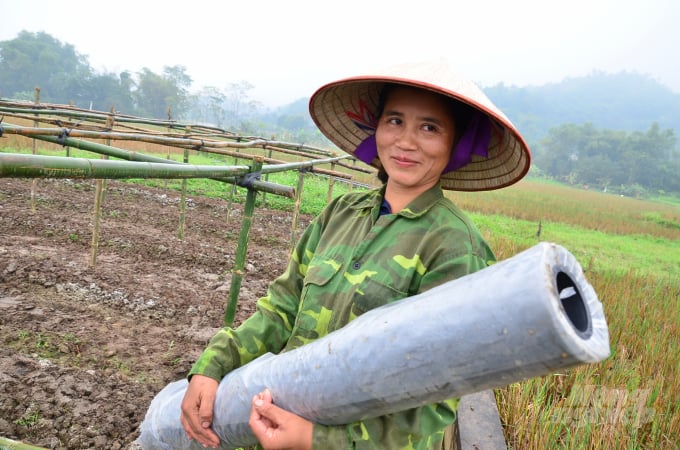
Thu was preparing plastic sheeting for her crop. Photo: Van Dinh.
Bui Thi Thu, a farmer in Son Phu village, Phong Phu Commune (Tan Lac district, Hoa Binh province) has been using plastic sheeting to cover her winter melon plants. 10kilos of plastic sheeting could be enough to cover 700 square meters of winter melon while her family grew up to 1,700 square meters of the crop.
"After harvesting water melons, I will turn upside down the nylon mulch, dig the soil and add fertilizers to continue to grow the next crop. Normally, this cover can be used for two or even three crops. The only way I can do with the discarded mulch is burning because no one tells me how to treat plastic waste," Thu said.
Plastic sheeting has been widely used across the fields of Son Phu village . Along the road leading to the fields, plastic waste has been piled up.
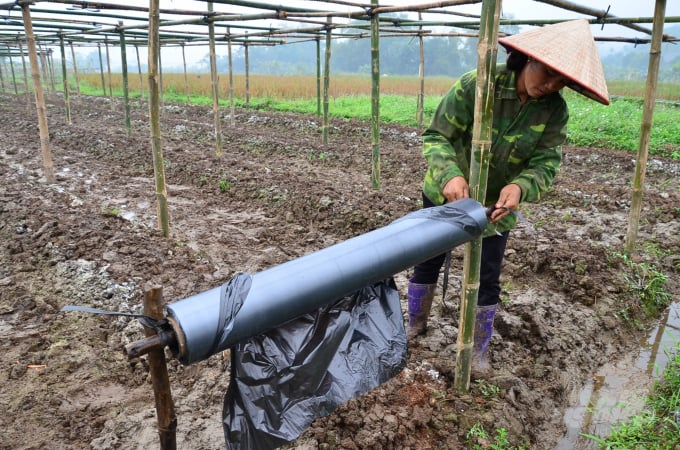
Thu tied plastic sheeting to a homemade trellis. Photo: Van Dinh.
According to Bui Van Nuc, Vice Chairman of Phong Phu's People's Committee, the commune has 120 hectares under vegetable cultivation including winter melon, bitter melon and gherkin. Plastic sheeting is needed to grow these crops.
Nguyen Hong Yen, Head of Hoa Binh’s Sub-department of Crop Production and Plant Protection said “Plastic materials have been now widely used in agricultural production. It sounds like a technical advancement adopted by farmers or even hi-tech farming enterprises to cover the soil, to prevent weed and maintain the moisture and nutrients. In the past, farmers used timber piles to build trellises for plants. Now they have used plastic net in place of wooden materials because it’s more convenient. The plastic foam fruit cover bag is also a remarkable issue. Besides when we grow forest trees we also create plastic waste. For example to have one hectare of acacia trees we use around 1.7 kilos of nylon. Those plastic wastes are often not taken in account.”
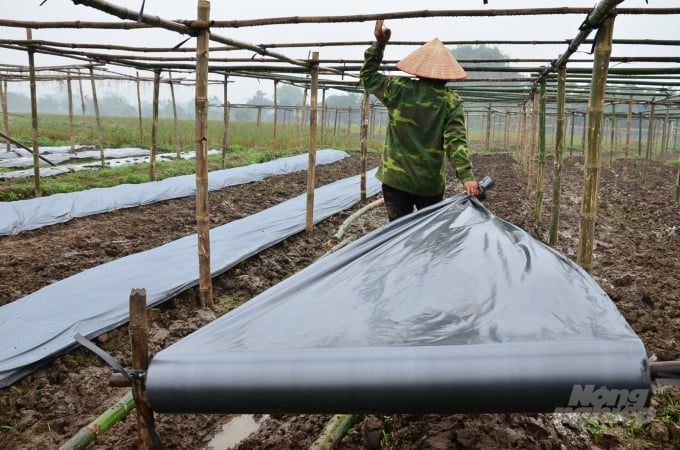
Thu spread nylon sheeting to build vegetable beds. Photo: Van Dinh.
Yen added: “Agricultural bags of all types and all sizes left at home will be thrown away as domestic waste or will be burned. It’s worth noting that nursery bags, plastic nets and plastic sheeting have been discharged right on the fields. For many years, the rice seedling dying from cold temperature has not happened in Hoa Binh thanks to plastic covers. However the problem is that these plastic covers can be used for only two or three years then they will be broken. After that where can we dump them?
About 1,468 tons of plastic waste are collected every year accounting for 81.9% of total plastic waste generated. However only 68.7 tons are brought to waste storage facilities accounting for 3.83% and around 664 tons are collected along with domestic waste accounting for nearly 37.03%. And, the remaining about 775 tons are reused or recycled accounting for 42.16%. Approximately 326 tons of plastic waste are dumped on fields accounting for 19.1%.
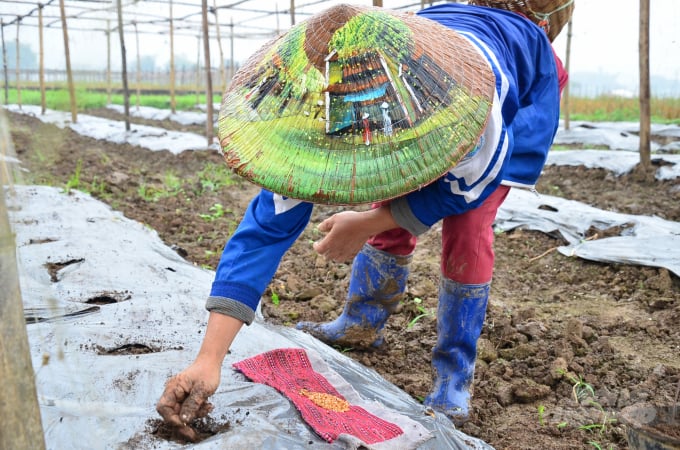
A farmer was seeding on nylon-covered bed. Photo: Van Dinh.
Almost all plastic waste was treated improperly and was mainly buried or burned. Consequently plastic waste would decompose into microplastic particles and toxic gases that enter the environment.
According to Nguyen Hong Yen, since Circular No.05 /2016 on collecting pesticide containers issued by the two ministries, the Ministry of Agriculture and Rural Development and the Ministry of Natural Resources and Environment, Hoa Binh’s competent authorities have organized propaganda programs and taken advantage of project sources to build more than 1,500 waste collection tanks. However waste collection did not take place regularly and it depended much on people’s awareness. Besides, because the circular was issued by the two ministries it just mentioned waste collection and treatment in general but not specify where localities could get money to fund the project, from the MARD or the MONRE and how to treat the piles of pesticide containers.
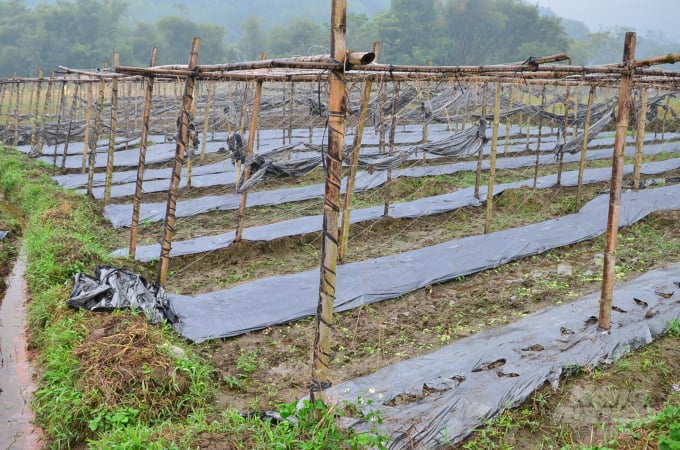
Nylon waste was littered on field. Photo: Van Dinh.
To tackle plastic pollution, Hoa Binh province has developed a project on collecting and treating pesticide containers and plastic waste from crop production during the 2021-2025 period, pioneering in the fight against plastic in the country.
The province aimed at properly collecting and treating at least 70% of pesticide containers, building standardized collection tanks in 70% of the province’s communes, wards and concentrated crop-growing areas and sorting at least 70% of plastic waste generated from crop production at source.

Plastic waste was burned on field in Phong Phu commune. Photo: Van Dinh.
The project planned to train and propagate at least 50% of the village leaders on the harmful effects of plastics and pesticide containers and establish at least one service facility that can meet the technical requirements for plastic waste treatment in general and pesticide containers in particular.
The fund to implement the project will come from the local budget (provincial and district levels); from National Target Programs including the program on socio-economic development for ethnic minorities and mountainous areas; from Official Development Assistance (ODA) and from the ministries, enterprises, cooperatives and producers.
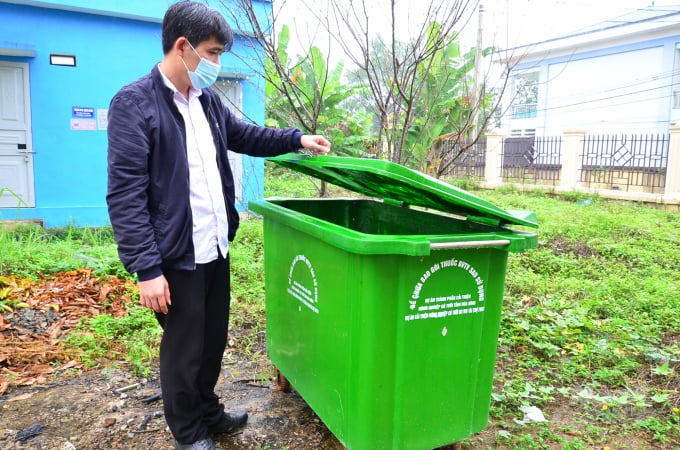
Plastic waster was littered while garbage bin was empty. Photo: Van Dinh.
The project will be implemented gradually starting with plastic waste collection from fields. It will be associated with the campaigns of irrigation and rat eradication to raising public awareness. The province’s agricultural department will take the role of giving directions and guidance while local authorities will take specific measures to implement the project.
In recent year, plastic use in crop production has tended to increase in Hoa Binh. With around 135,000 hectares under crop production per year the amount of plastic waste discharged is around 1,793 tons every year. Most of the plastic waste is fertilizer bags. The diversification of packaging types and sizes is contributing to increasing plastic waste.
Translated by Mai Tham
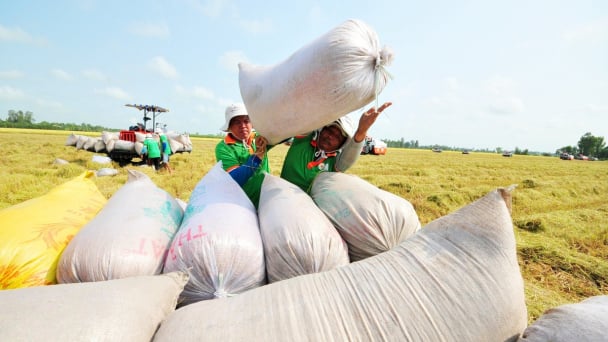
(VAN) The rice industry in the Mekong Delta is undergoing a major transformation, shifting toward sustainable, high-quality, and low-emission exports to meet the green and clean standards increasingly demanded by international markets.
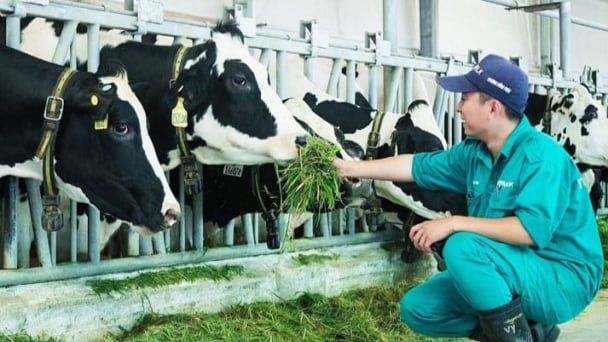
(VAN) According to Tong Xuan Chinh, Deputy Director of the Department of Livestock Production and Animal Health, Vietnam’s dairy cattle industry must overcome seven major challenges to achieve sustainable development.
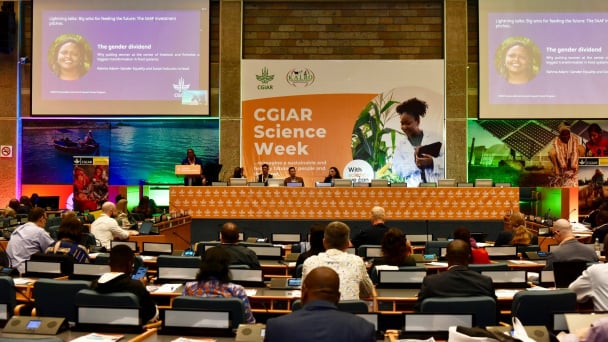
(VAN) The CGIAR’s Sustainable Animal and Aquatic Foods (SAAF) program represents a new approach that emphasizes the transformation of food systems toward sustainability.
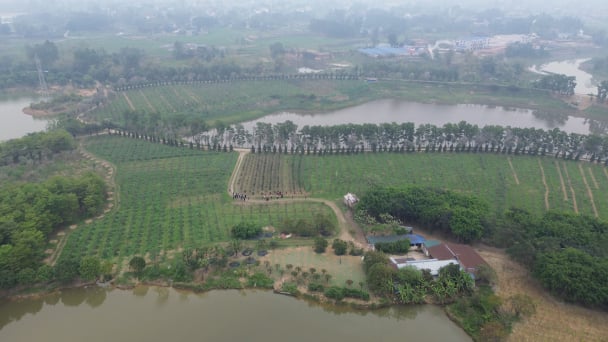
(VAN) Scientists assume that industrial agriculture has been 'outdated.' As a result, a comprehensive overhaul or a revolution in the direction of embracing ecological agriculture is needed.
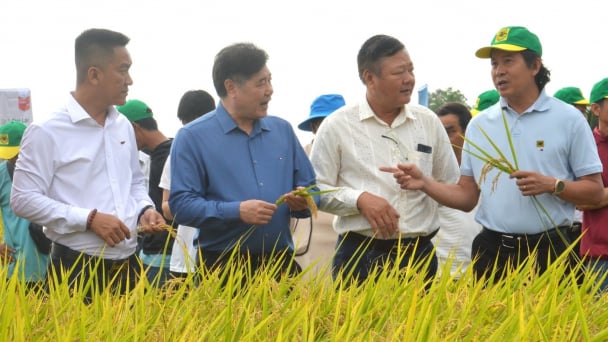
(VAN) The results from pilot fields are catalyzing the expansion of the One million hectares of high-quality, low-emission rice project in Kien Giang.
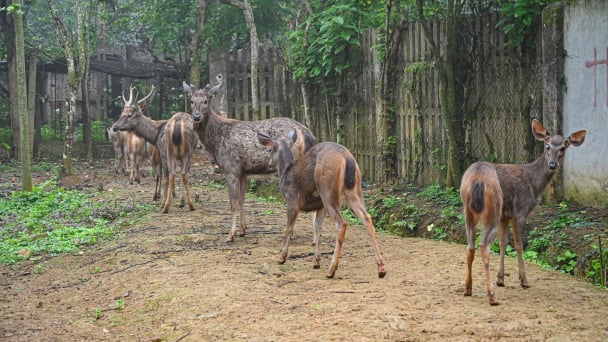
(VAN) On the morning of April 11, Cuc Phuong National Park received 18 individuals of endangered and rare wild animals from Da Nang city.
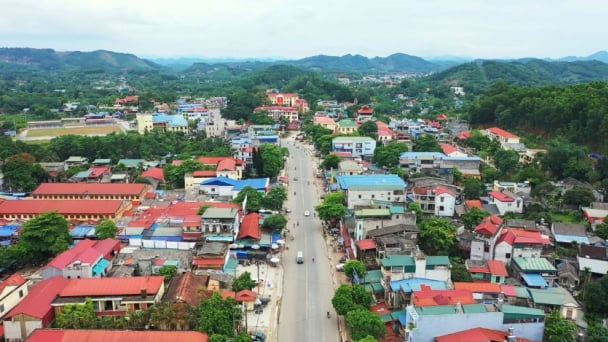
(VAN) FAO supports Vietnam in enhancing survey sampling techniques for the 2025 nationwide agricultural and rural census.